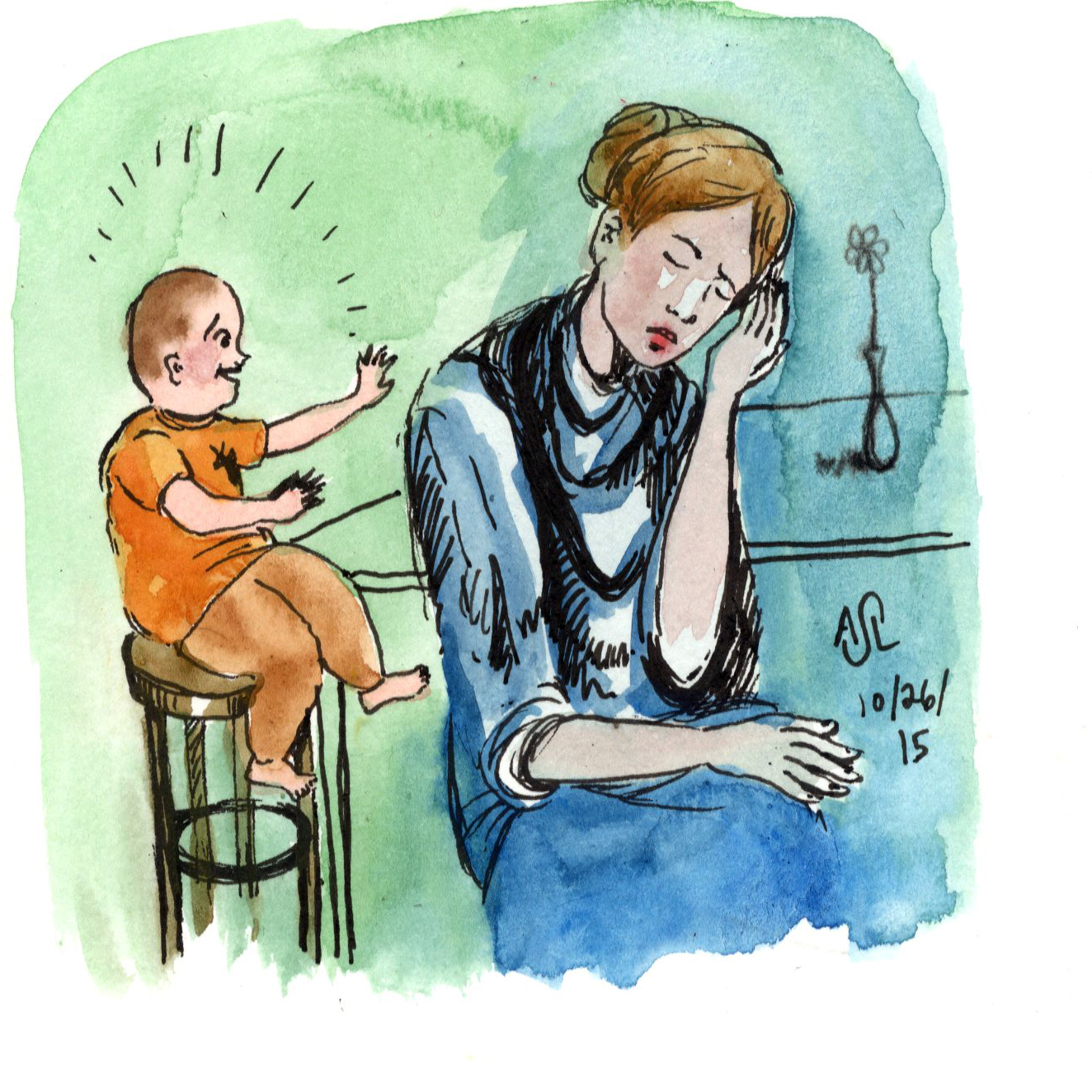
Depression during pregnancy may affect how women interact and bond with their infants, according to new research from the Yale Child Study Center.
While previous studies examined the ways in which depressed women respond to infant faces and cries after they have reached the postpartum period, the Yale researchers observed women between 34 and 38 weeks of pregnancy as they looked at different photos of babies and heard cries at different distress levels. Women who scored higher on depression scales had a reduced response to photos of distressed babies as compared to women who did not have a high depression score, according to the study.
“These findings suggest that in community samples of pregnant women, there is significant variation in depression symptoms that may be influencing the emerging neural correlates of sensitivity to infant distress. Understanding how this relationship continues during pregnancy and postpartum may have important implications for caregiving,” said coauthors Helena Rutherford and Linda C. Mayes in a Saturday email to the News.
The researchers recruited 36 women who were between 34 and 38 weeks pregnant and measured their depressive symptoms using the Edinburgh Postnatal Depression Scale and the Beck Depression Inventory-II. Using electroencephalograms, a brain imaging technique, they measured women’s responses to different stimuli — a series of happy, distressed and neutral baby faces and recordings of cries. Women who scored higher on the depression scales showed lessened responses to distressed baby faces but not to happy or neutral faces. There was no relationship between depressive symptoms and response to the cries. The study demonstrated that an increase in depressive symptoms during pregnancy could affect how these women process infant faces. This could potentially be detrimental to the caregiving process after birth, according to Rutherford and Mayes.
The researchers elected to use EEG, which is safe to use during pregnancy. Researchers used the P300, a wave that reflects intensity of neural response, to measure women’s responses during the study.
“[The P300] is thought to reflect how much attention we pay toward different sensory inputs,” Rutherford explained. “If an image is more emotional or engaging, the P300 [wave] is typically larger in size — reflecting that we are paying more attention toward it.”
Rutherford and Mayes said follow-up research to the study could go in three main directions. First, they stressed the importance of replicating and extending these findings in other samples of pregnant women, hopefully also assessing responses to adult facial expressions in addition to infant faces. This would allow researchers to better understand whether the results in this study hold true for all faces, or if the effect only applies to infant faces. Second, future research could examine the association between depression and the P300 reaction to infant faces in the postpartum period, potentially comparing that new data to P300 responses elicited during pregnancy, Rutherford said. Lastly, future work could look at how depression may be associated with caregiving behavior, according to the researchers.
According to the Center for Disease Control and Prevention, clinical depression can be debilitating at any point in life, but poses special challenges for expectant and new mothers. Rutherford and Mayes noted that, in women who are about to or have just given birth, depression is treated in a number of different ways. These include pharmaceutical medicine, cognitive-behavioral therapy or forms of psychotherapy. However, they stressed that their specific concern in conducting studies is the extent to which depression remains undiagnosed during pregnancy and postpartum.
According to a national survey from the CDC, roughly 8 percent of pregnant women experienced major depression in the last year.







